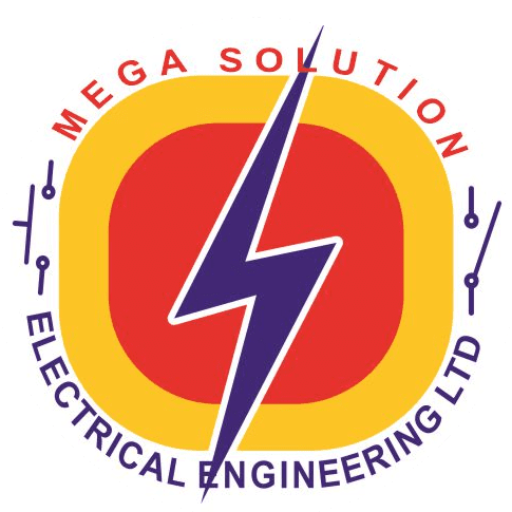Home / Blog Posts / Generator Repair and Maintenance in Ghana
In Ghana, reliable power backup is essential, and maintaining your generator can make a significant difference. This article covers common generator issues, troubleshooting steps, and the importance of professional repair and maintenance services. With regular upkeep, businesses and homeowners can extend the lifespan and efficiency of their generators, ensuring they’re ready when needed. Discover key insights on repair services, DIY tips, and how to keep your generator running smoothly year-round.
Generator Repair and Maintenance In Ghana, where power outages can disrupt daily operations, owning a generator has become essential for businesses, industries, and even residential properties. However, generators, like all mechanical equipment, require proper care and maintenance to ensure they operate efficiently. Common issues like overheating, low power output, and battery failures can interrupt operations. Knowing when to troubleshoot on your own and when to call for professional help can make a significant difference in extending the lifespan of your generator and ensuring it’s always ready when needed.
A generator is a machine that converts mechanical energy into electrical energy. It works on the principle of electromagnetic induction, where a magnetic field is generated by rotating a coil within a stationary magnetic field, inducing an electric current.
Generators are commonly used to provide backup power during outages, or as a primary source of power in areas where the electrical grid is not available. They are also used in various industrial, commercial and residential applications, such as:
Generators come in various sizes, types, and fuel sources, including:
The main components of a generator include:
Generators are rated based on their power output, typically measured in watts (W) or kilowatts (kW). The size and type of generator needed depend on the specific application and power requirements.
To convert kilowatts (kW) to kilovolt-amperes (kVA), you can use the following formula:
kVA = kW ∕ Power Factor (PF)
If you have 100 kW with a power factor of 0.8: kVA =100 ∕ 0.8 = 125kVA
A common issue with generators is battery failure, often due to ageing or damage. Over time, batteries lose the capacity needed to start the generator. A drained battery may prevent the generator from starting, although using a pull starter might temporarily keep the engine running. Knowing your battery’s service life is key to scheduling replacements before downtime occurs. In the case of portable or rental generators, the battery may drain if left connected for too long. Failure of batter alternator could lead to battery damage or drain.
Regularly inspect batteries, chargers, and all connections to ensure they are in good condition. Clean and tighten terminals, and remove any sulphate buildup from the battery plates, as it can weaken the current output. A good battery charger can help maintain charge levels, preventing complete drainage. At places where generators are not used often, installation of electric battery charger could keep battery from draining.
Generator Repair and Maintenance in Ghana: Sulphate buildup is a process that occurs when lead sulphate crystals build up on the plates of a battery. Image of Sulphate buildup
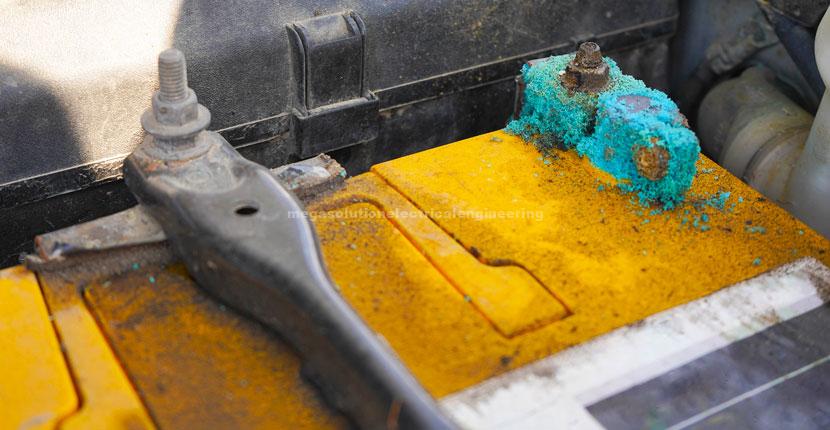
Generators may fail to start due to several factors, such as low fuel, lack of oil, faulty spark or plugs, or a clogged injectors, carburettor, filters, etc. Each issue requires different attention.
Verify that the fuel tank has enough fuel. Refill the tank if necessary, and ensure the fuel used is of the correct type and quality recommended by the manufacturer. If the fuel level or quality is identified as an issue, the following steps can help address these problems effectively.
When the generator fuel tank is depleted or running low, it’s essential to refill it with the specified type of fuel. Ensure the fuel is free from water or debris, as contaminants can harm the engine. Neglecting to properly maintain and inspect your fuel and tank can result in difficulties starting and running your generator smoothly and efficiently. However, even with proper refueling practices, fuel contamination can still occur. If you suspect that your fuel is contaminated, take immediate action. Drain the existing fuel and thoroughly clean the tank, removing any residue or particles that may be causing the issue. Refill the tank with high-quality fuel from a trusted source, and consider using a fuel stabilizer to prevent future contamination and maintain optimal fuel performance.
If the Fuel gauge is faulty and showing incorrect levels, take a manual approach to inspecting the fuel level. Use a dipstick, or similar tool, to get an accurate reading. If the gauge is found to be inaccurate, it’s time to replace or repair it. Don’t let a faulty generator fuel gauge leave you out of power
If there is an airlock in the fuel system, prime the fuel system as per the manufacturer’s guidelines to remove air bubbles. Check for leaks in the fuel line and tighten any loose fittings.
In the event that the generator has been filled with an incorrect type of fuel, it is crucial to drain and flush the entire fuel system. This will ensure that any remnants of the incorrect fuel are completely removed from the system. Refer to the generator’s manual for the correct type of fuel to refill with. It is important to follow these steps carefully to avoid any potential damage to the generator and ensure its proper functioning.
If the Fuel Filters are clogged or filled with dirt and grime, carefully remove and inspect them. The filters should be handled with caution, as they are essential to the proper functioning of the generator. If they are found to be obstructed, it is crucial to replace them promptly with new filters that meet the exact specifications provided by the generator’s manufacturer. To avoid any future problems, it is recommended to schedule regular filter replacements at designated intervals. This will ensure that the generator continues to run smoothly and efficiently without any interruptions or malfunctions caused by dirty or blocked filters.
If fuel lines are leaking, blocked, or cracked, it is imperative to take immediate action. Tighten any loose fittings or carefully replace damaged lines to ensure proper and safe fuel flow. If the lines are severely damaged, welding may be necessary for repair or replacement. It is crucial to address these issues promptly to prevent potential hazards and maintain the integrity of the fuel system.
If the fuel injectors become clogged or begin to malfunction, it is important to take action. Using a specialized fuel system cleaner designed for your specific generator, carefully and thoroughly clean or service the injectors to remove any build-up or deposits that may be inhibiting their function. For any severe damage or issues that cannot be resolved with cleaning, it may be necessary to replace the injector entirely in order to ensure optimal performance of your generator. Don’t let dirty injectors hamper the effectiveness of your generator – keep them well-maintained for peak performance and efficiency.
If the fuel pump is preventing fuel from reaching the engine, it must be serviced and tested for proper operation. The consistency and flow of the fuel must be checked to ensure it effectively reaches the engine. If the pump fails this test, it is imperative to replace it with a functioning one in order to maintain proper functionality and performance of the generator.
If there is Air in the generator fuel system, carefully search for the tiny, inconspicuous bleed screws or valves near the fuel filter or injection pump. With precision and caution, slowly loosen them just enough to allow air to escape. With a firm grip on the manual fuel pump or primer, steadily push fuel through the system, releasing any trapped air as it flows. Keep a watchful eye for any signs of bubbles as you continue this process, until a clear and uninterrupted stream of fuel gushes from the bleed point. Once satisfied, securely tighten each screw to ensure no more pesky air can enter the system. Don’t forget to repeat this meticulous procedure for each injector, ensuring that not even the tiniest bit of air remains in the system. Finally, restore the fuel pressure to match the manufacturer’s recommended level for optimal performance.
Check the engine oil level using the dipstick. Refill with the appropriate oil type if it is low. Also, inspect the oil for signs of contamination or degradation, and replace it if necessary.
To ensure optimal performance, it is essential to regularly check the oil level in the generator engine. Using the dipstick provided by the manufacturer, carefully assess if the oil levels are below the recommended amount. If so, refill with the specified type of oil until it reaches the proper level. However, be mindful not to overfill as this can result in damage to the engine. Protect your investment and maintain the functionality of your equipment by taking proper care in this crucial step.
When running a finger through the oil, one can feel the rough texture of the tiny specks of smoke carbon, almost like sand grains, as they cling to the oil, it is best to drain it completely and refill with fresh oil of the recommended grade. It is also highly recommended to replace the oil filter in order to ensure optimal engine protection and performance. Neglecting to do so could result in potential damage and decreased efficiency for your vehicle.
When the oil has degraded over time and lost its lubrication properties, perform a full oil change with the recommended type. To prevent recurrence, establish regular maintenance intervals aligned with the generator’s operating hours or the manufacturer’s guidelines.
In the event that the engine oil being used is not suitable for the generator’s engine, it is crucial to refer to the owner’s manual in order to identify the correct type of oil. Carefully drain out the incorrect oil and replace it with the specific brand and grade of oil recommended by the manufacturer. This will guarantee optimal performance of the engine, ensuring its smooth operation and longevity.
If oil leaks are detected around seals, gaskets, or fittings, carefully inspect the engine to locate the source. Tighten any loose fittings and replace worn or damaged seals and gaskets. Promptly addressing leaks helps prevent oil loss and potential engine damage.
If a layer of dirt or debris has formed over the generator air filter, impeding its airflow and potentially damaging the equipment, carefully remove the filter and examine it for any signs of wear or damage. For reusable filters, follow the manufacturer’s instructions for cleaning, either using compressed air to blow away any particles or washing with soap and water. Before reinstalling, make sure the filter is completely dry to avoid moisture buildup. If the filter is disposable or excessively dirty, it should be replaced with a new one that meets the exact specifications required for your generator model. By properly maintaining the air filter, you can ensure optimal performance and longevity for your generator system.
As the generator hummed and whirred, a sharp warning light flashed on the control panel. Low coolant levels or possible system leaks could be impairing its cooling efficiency. Carefully, the technician retrieved the manufacturer-recommended coolant from the supply closet and prepared to refill the system. With gloved hands, they opened the hood of the generator and cautiously poured in the liquid, mindful of any potential burns. Before closing the hood, they inspected all visible components for signs of leakage – joints that were not tightly secured, hoses with cracks or tears, or a radiator that may need repair. Any issues would need to be promptly addressed to ensure optimal performance from the powerful machine.
A malfunctioning cooling fan or worn belts can significantly compromise the generator’s vital cooling system. It is imperative to thoroughly inspect the fan for any signs of damage or obstructions that may hinder its movement, as this could ultimately lead to overheating and potential damage to the entire system. Listen closely for any unusual noises while the fan is in operation and ensure it moves smoothly and without resistance. In addition, carefully examine all belts in the cooling system for any signs of wear, fraying, or looseness. Any issues should be promptly addressed by replacing or adjusting the belts according to the manufacturer’s specifications, as proper functioning of the cooling system is crucial for efficient performance and longevity of the generator.
Use a compression tester to assess the engine’s compression levels. Low compression may indicate worn piston rings, valves, or cylinder issues that require professional repair.
Low engine compression caused by worn piston rings can significantly impact performance. Conduct a compression test to identify any pressure loss in the cylinders. If the rings are worn or damaged, replace them with new ones that meet the manufacturer’s specifications to restore proper combustion and ensure efficient engine operation.
Leaking or damaged intake or exhaust valves can lead to reduced engine compression and performance issues. Carefully inspect the valves for cracks, carbon deposits, or signs of improper sealing. Clean or replace any compromised valves and reseat them as needed. Conduct a leak-down test to confirm the repairs have resolved the compression problem.
Damage to the cylinder walls, such as scoring, cracks, or warping, can significantly reduce compression and hinder engine performance. Carefully inspect the walls for these issues. Minor damage may be resolved through re-boring and honing to restore a smooth surface. However, severe damage could necessitate replacing the engine block to ensure optimal functionality and reliability.
Compression loss caused by a blown or improperly seated cylinder head gasket can lead to significant engine inefficiency. Inspect the gasket carefully for signs of leaks, cracks, or damage. If issues are detected, replace the gasket with a new one, ensuring all surfaces are clean and free of debris. During installation, tighten the bolts according to the manufacturer’s torque specifications to achieve a proper and secure seal.
Incorrect valve timing, often caused by a misaligned camshaft or a worn timing belt or chain, can disrupt engine compression and overall performance. To address this issue, inspect the timing components for alignment and wear. If misalignment is detected, adjust the camshaft and timing components according to the manufacturer’s specifications. Replace any worn or damaged timing belts or chains to ensure precise timing and restore proper engine function.
A blocked exhaust pipe can restrict airflow, leading to reduced engine efficiency and performance. Inspect the exhaust system for obstructions, such as debris, soot buildup, or foreign objects, that may be causing the blockage. Carefully remove the obstruction using a flexible cleaning tool or compressed air, ensuring the exhaust pipe is clear. Implement regular maintenance and cleaning routines to prevent similar issues in the future and maintain optimal engine performance.
A damaged muffler can have a significant impact on exhaust flow and greatly decrease engine efficiency. As you inspect the muffler, keep an eye out for any visible signs of damage, such as dents or cracks, that could impede exhaust performance. It’s also important to check for blockages that may be hindering proper airflow. If the muffler is severely clogged or damaged, it’s necessary to replace it with a new one that meets the generator’s specific requirements. Regularly examining and maintaining the muffler is crucial in preventing potential performance issues and ensuring smooth operation of the generator. The state of the muffler is vital in maintaining optimal functioning and should not be overlooked.
A malfunctioning or clogged catalytic converter can restrict exhaust flow, affecting engine performance. To diagnose the issue, test the converter using a backpressure gauge to identify excessive pressure buildup. If the catalytic converter is found to be faulty or no longer functioning effectively, replace it with a compatible unit. Ensuring the catalytic converter operates efficiently helps maintain optimal exhaust performance and compliance with emissions standards.
A faulty exhaust manifold can disrupt the smooth flow of exhaust and significantly decrease the efficiency of the engine. A thorough inspection of the manifold is crucial, checking for any visible cracks or damage. It is also important to carefully examine the gasket for leaks or incorrect placement. In case of minor cracks, a high-temperature sealant can be used as a temporary fix, but if the damage is severe, it may be necessary to replace the entire manifold. Additionally, it is essential to make sure that the gasket is in good condition and correctly fitted to ensure optimal functioning of the exhaust system. The performance of the vehicle relies heavily on a properly functioning exhaust system, so attention to detail is paramount when addressing any issues with the exhaust manifold.
Exhaust sensor issues, such as faulty oxygen or exhaust gas sensors, can result in inaccurate engine adjustments and reduced performance. Use a diagnostic tool to test the sensors for proper functionality. Replace any defective sensors promptly to maintain accurate engine management and optimal performance.
The belts that keep your generator running smoothly and efficiently are essential components to its performance. It is important to regularly inspect these belts for any signs of wear and tear, such as cracks, fraying, or excessive damage. If you notice any of these issues, it is crucial to promptly replace the damaged belts with manufacturer-approved replacements. This will not only maintain the optimal functionality of your generator, but also prevent potential failures that could disrupt its operation. Ensure the longevity of your generator by taking care of these small yet significant details.
Loose or improperly tensioned generator belts can lead to slipping or undue stress on the system. Use a belt tension gauge to measure the tension of each belt and adjust it according to the manufacturer’s specifications. Proper tensioning ensures smooth operation and extends the belt’s lifespan while preventing performance issues.
Misaligned generator pulleys can lead to uneven belt wear and reduced efficiency. Carefully inspect the pulleys for alignment and use a pulley alignment tool to adjust their position if necessary. Ensuring proper alignment will promote even belt wear and prolong the system’s operational life.
Damaged or worn generator pulleys can disrupt belt operation and lead to system failures. Inspect the pulleys for any signs of dents, cracks, or worn grooves. Replace any damaged pulleys promptly to ensure smooth and reliable belt operation, preventing further mechanical issues.
Dirt or debris in the pulley system can impair belt function and lead to premature wear. Thoroughly clean the pulley system to remove any accumulated dirt, grease, or debris. Regular cleaning not only ensures optimal belt and pulley performance but also extends their lifespan, maintaining the system’s overall efficiency.
If bolts or nuts within the system are loose, use a torque wrench to tighten them to the manufacturer’s specified torque levels. Ensuring all fasteners are securely tightened will prevent vibrations, misalignments, or potential damage to connected components, maintaining the integrity and reliability of the machinery.
If any parts of the generator such as brackets, mounts, or covers show visible wear, cracks, or breakage, inspect them thoroughly. Replace any damaged components immediately to maintain the structural integrity of the machinery and prevent further damage or potential operational failures. This proactive approach ensures continuous and safe operation.
If you notice unusual vibrations or noise, identify and secure any loose parts causing these issues. Utilize lock washers or thread-locking compounds on bolts that are prone to loosening over time. This measure will help stabilize the parts and reduce vibrations and noise, ensuring smoother and more reliable operation of the machinery.
If there are missing bolts, screws, or other components, conduct a thorough check to identify what’s absent. Replace any missing fasteners with ones that match the correct size and type specified by the manufacturer. This will ensure the assembly is restored to its proper stability and function, preventing potential mechanical failures.
Upon inspection, should you discover any components exhibiting signs of rust or corrosion, it is imperative to address the issue immediately. Utilize a sturdy wire brush or specialized rust remover solution to diligently clean these affected parts, leaving no trace of the corrosive materials in their wake. In cases where the corrosion is severe and poses a risk to the structural integrity or functionality of the equipment, it is absolutely necessary to replace these components entirely. By taking such precautionary measures, you can ensure the continued safety and reliability of the operation while also maintaining your equipment in its optimal condition for maximum performance.
For Diesel Engines: Inspect glow plugs for damage or malfunction. Replace any faulty plugs to ensure the engine heats properly for ignition.
In the event that you suspect damaged or faulty glow plugs, it is important to take preventive measures. Use a multimeter, a tool designed to measure electrical currents, to test each glow plug for continuity. Look closely for any visible damage as well. Any glow plugs that do not show continuity or have obvious signs of wear and tear should be replaced immediately. Ensuring all glow plugs are functioning correctly is crucial, as even one faulty one can cause difficulties when starting the engine, especially in cold conditions. This proactive maintenance not only prevents start-up issues but also maintains the overall reliability of the engine, giving you peace of mind and avoiding potential breakdowns on the road.
If carbon build-up is present on glow plugs, clean the deposits using a wire brush or a specialized carbon cleaner. This will help restore the glow plugs’ functionality and efficiency. After cleaning, make sure to reinstall the glow plugs correctly to ensure effective operation and prevent further issues with engine starting or performance.
If you suspect a faulty glow plug relay or timer, use a circuit tester to check its functionality. Should the relay or timer prove defective, replace it to ensure the glow plugs receive the correct power at the right intervals. This replacement is crucial for maintaining proper heating cycles, which are essential for the efficient starting of the engine, especially in colder conditions.
For generator Petrol Engines: Check spark plugs for wear, fouling, or incorrect gapping. Clean or replace them if needed.
If spark plugs are worn or fouled, inspect them for signs such as black soot or oil residue indicating fouling, and eroded electrodes indicating wear. Replace any spark plugs that are fouled or show significant wear with new ones that match the manufacturer’s specifications. This ensures optimal engine performance and fuel efficiency, and prevents misfires and engine running issues.
If the generator spark plug gap is incorrect, use a spark plug gap gauge to measure and adjust the gap to the manufacturer’s recommended size. Proper gapping is crucial as it ensures efficient ignition, optimal engine performance, and prevents misfiring, contributing to the overall health of the engine.
If spark plugs are loose, with a tool in hand, tighten the loose spark plugs to the precise torque indicated by the manufacturer. These small but crucial components play a vital role in maintaining the engine’s efficiency and preventing potential damage. A secure grip on the spark plugs is necessary to ensure smooth functioning of the engine, avoiding any misfires or other malfunctions. Taking care of these details will keep your engine running smoothly and efficiently for miles to come.
Ensure the crankcase breather is not clogged. A blocked breather can lead to pressure buildup and hinder engine performance.
If the crankcase breather is clogged, remove and clean it thoroughly using a suitable solvent or compressed air to eliminate any accumulated dirt, oil sludge, or debris. Ensure the breather is completely clear to maintain proper engine ventilation. If the breather cannot be effectively cleaned or if it remains obstructed after cleaning, replace it with a new one to ensure optimal engine performance and prevent potential pressure build-up issues.
If the breather components such as hoses and valves show signs of damage or wear, inspect them carefully for any cracks, wear, or other types of damage. Replace any defective components promptly to prevent pressure buildup in the crankcase and to ensure smooth and efficient engine operation. Proper maintenance of these components is crucial for maintaining engine health and functionality.
If you notice excessive oil deposits in the Crankcase breather, it could indicate that the oil levels are overfilled or there is blow-by from the piston rings. First, check and drain any excess oil to maintain proper oil levels. If the issue persists, it is advisable to have a professional inspect the piston rings for any underlying problems. Addressing these issues promptly can help prevent more severe engine damage and maintain optimal engine performance.
Examine engine mounts for wear or damage that could lead to vibration or misalignment during operation.
If the generator engine mounts are worn or damaged, thoroughly inspect them for cracks, wear, or other visible damage. Replace any mounts that show signs of deterioration to ensure the engine remains securely positioned and operates smoothly. This is crucial to prevent excessive vibration, potential engine misalignment, and further mechanical damage.
If you find loose mounting bolts on the generator engine mounts, it’s important to tighten them to ensure the engine remains securely in place during operation. Use a torque wrench to tighten the bolts to the manufacturer’s specified torque settings. Properly securing these bolts is crucial to maintaining the structural integrity of the engine mounts and preventing vibrations or shifts that could lead to engine damage or reduced performance.
If the generator engine appears misaligned, this could be due to faulty or worn engine mounts. Replace these mounts to correct any misalignment, and ensure the engine is realigned accurately. In cases where the misalignment is severe or complex, it is advisable to seek professional assistance. A properly aligned engine is crucial for optimal performance and longevity, preventing uneven wear and potential mechanical issues.
Confirm all electrical connections are tight and free of corrosion. Loose or damaged connections can prevent the generator from starting.
Carefully check and confirm that all of the electrical connections for the generator are tightly secured and free from any signs of corrosion. Loose or damaged connections can hinder the starting process of the generator, so it is crucial to double-check their stability. Thoroughly inspect all fuses in both the control panel and the overall electrical system of the generator. If any fuses appear blown, immediately replace them with ones of equal amperage rating. Be sure to also verify that all fuse holders are securely fastened and devoid of any signs of rust or decay. Neglecting these essential maintenance tasks could result in costly repairs or disruptions in power supply.
Examine fuses and relays for continuity. Replace any blown fuses or malfunctioning relays that could interrupt the power flow.
If you encounter loose or corroded connections, it’s important to address them promptly to maintain electrical integrity and performance. Tighten any loose connections securely and clean corroded terminals using a wire brush and contact cleaner to ensure good electrical contact. If connectors are damaged beyond repair, replace them to prevent potential electrical failures and ensure reliable operation.
If you discover frayed or exposed wires, it’s crucial to address these issues immediately to prevent electrical hazards. For minor damage, use electrical tape to insulate and secure the exposed sections temporarily. However, for a permanent and safer solution, replace any damaged wiring entirely. This ensures the electrical system remains safe and functional, reducing the risk of shorts and potential fires.
Use a multimeter to test the starter and starter relay. Ensure the starter is engaging properly and that the relay is not stuck or burned out.
If the generator starter motor is faulty, it is crucial to address the issue promptly to ensure reliable engine starting. Evaluate the condition of the starter motor and attempt repairs if feasible. However, if repairs are not practical or the motor continues to malfunction, replacing the starter motor with a new one is the best course of action. This will restore the reliability of your engine’s starting system and prevent further issues.
If the starter relay is found to be defective, it should be replaced immediately with a fully functioning unit. A properly working starter relay is essential for transmitting power to the starter motor and ensuring reliable engine start-up. Replacing a faulty relay helps prevent intermittent or failed engine starts, maintaining the overall efficiency and reliability of your system.
If the generator starter motor is displaying signs of weakness or damage, it’s important to take immediate action to diagnose and repair the issue. Begin by carefully testing its engagement and functionality. Using a multimeter, check for proper electrical flow and power. Listen closely for any clicking sounds, as these can often be an indicator of a weak or failing motor. Take a thorough look at the wiring and connections, making sure there are no loose or corroded terminals. If necessary, clean or secure them to ensure a strong connection. If the motor continues to show signs of weakness or remains non-functional, it may require either a rebuild or replacement. When selecting a new starter motor, be sure to choose one that aligns with the specifications of your particular generator in order to ensure reliable performance once again.
If the generator starter solenoid is faulty, test its functionality as it serves as a relay between the battery and the starter motor. Use a multimeter or diagnostic tool to check for proper operation. If the solenoid fails to click or engage during testing, it is likely defective and should be replaced promptly. Installing a functional solenoid ensures reliable power transmission to the starter motor and restores the engine’s starting system.
If the generator starter motor’s gears or internal components are worn or damaged, carefully inspect them for signs of stripping, wear, or other issues. For serviceable motors, disassemble the unit and replace any defective gears or components with new ones that meet the manufacturer’s specifications. If the damage is extensive or the motor is not serviceable, replace the entire motor to ensure reliable performance and prevent further mechanical issues.
Ensure the key switch is functioning correctly. A faulty key switch may not send the required signal to the starter.
Verify the automatic control settings are configured correctly, especially if the generator is part of a standby system. Misconfigured settings can hinder operation.
If the generator mode selection is incorrect, adjust it to “Auto” or the setting that best suits your operational requirements. Ensuring the mode is correctly configured helps the generator function as intended, whether for automatic operation or specific manual settings.
If the control parameters are misconfigured, reconfigure the settings following the guidelines in the user manual. Proper configuration ensures the generator operates efficiently and aligns with your specific requirements.
Carefully check the generator emergency stop button to ensure it is not currently activated. If it is, gently release the button completely to avoid any potential blockage of the start command. Confirm that the emergency stop button is back in its normal position before proceeding. Before relying on the button for a critical situation, test it thoroughly to guarantee proper operation. If any malfunctions are detected, promptly replace the button with a new one to ensure optimal safety and functionality.
Remove and inspect spark plugs for wear or fouling. Test ignition coils with an appropriate tester to ensure they are delivering the correct voltage. Replace defective components as needed.
If the generator spark plugs are fouled or damaged, clean them thoroughly to remove carbon deposits or replace them with new ones if necessary. Ensure the spark plugs are correctly gapped according to the manufacturer’s specifications to achieve optimal ignition and engine performance.
If there is a weak or no spark, test the ignition coil to determine if it is providing the required voltage. If the coil is faulty or fails to deliver sufficient voltage, replace it with a new one that meets the manufacturer’s specifications to restore proper ignition and engine performance.
If the connections to the ignition coil are loose or damaged, inspect them carefully. Tighten any loose connections and replace damaged ones to ensure a secure and reliable electrical flow to the ignition coil. Proper connections are essential for maintaining consistent ignition and optimal engine performance.
Test the generator’s battery voltage and inspect the terminals for corrosion. Ensure all battery cables are securely connected. Charge or replace the battery if it’s weak or dead.
If the generator battery terminals are corroded, clean them using a solution of baking soda and water to neutralize the corrosion. Scrub gently with a wire brush to remove any buildup, rinse with clean water, and dry thoroughly. Once cleaned, apply a terminal protector spray to prevent future corrosion and ensure reliable electrical contact.
If the battery cables are loose or disconnected, inspect them for proper alignment and attachment. Tighten any loose cables securely to the battery terminals or reconnect them if they are disconnected. Ensuring a strong and stable connection is crucial for reliable power delivery and system performance.
If your generator has a fuel shutoff solenoid, confirm it is functioning correctly. A stuck or faulty solenoid can prevent fuel delivery, hindering the start process.
Check the control module for signs of damage or failure. Examine the wiring harness for any frays, breaks, or disconnections.
If the generator control module is damaged or malfunctioning, inspect it for signs of failure, such as burnt circuits, physical damage, or erratic behavior. Before replacing it, perform a reset following the manufacturer’s guidelines to confirm the issue. If the problem persists after the reset, replace the control module with a compatible unit to restore proper functionality.
If the wiring in the generator harness is frayed, broken, or disconnected, address minor issues by using electrical tape or splice connectors to repair the damage. For severely damaged or broken sections, replace the wiring entirely to ensure reliability. Verify that all connectors are securely attached and test for proper continuity using a multimeter to guarantee optimal performance.
If the connections to the control module are loose or corroded, tighten any loose connections securely. Clean corroded terminals thoroughly using a contact cleaner to restore proper electrical flow. Apply dielectric grease to the terminals to prevent future corrosion and ensure consistent performance of the control module.
If sensors connected to the control module are faulty, test each sensor individually to verify proper operation. Replace any defective sensors with new ones that meet the manufacturer’s specifications. After replacing the sensors, recalibrate the control module as necessary to ensure accurate functionality and optimal system performance.
Confirm the generator is properly grounded. Faulty grounding can interfere with electrical circuits and starting mechanisms.
If the generator is not properly grounded, inspect the generator grounding wire for continuity and ensure it is securely connected to both the generator and the grounding rod or system. Use a grounding tester or multimeter to measure the grounding resistance, ensuring it is below 25 ohms, which is typically recommended for safety and efficiency. Address any loose connections or damaged components to restore proper grounding and maintain safe operation.
If grounding connections of the generator are corroded or loose, clean the grounding terminal and wire connections thoroughly using sandpaper or a wire brush to remove corrosion. Tighten all connections securely to ensure proper electrical contact. Apply an anti-corrosion compound to the cleaned connections to protect them from future corrosion and maintain reliable grounding.
If the grounding rod is not installed or is insufficiently deep, install a grounding rod in compliance with local electrical codes. Ensure the rod is driven deep enough into the ground to establish a reliable connection, typically 8 feet or more, depending on regulations. For an existing shallow rod, extend it using an appropriate coupler or install an additional grounding rod connected with a grounding wire to improve grounding reliability. Proper installation is essential for safety and system performance.
Check all circuit breakers to ensure they are in the correct position. Tripped breakers may need resetting before the generator can start.
If the circuit breaker of the generator is tripped, reset it by switching it off and then back on. If it trips again after resetting, inspect the connected circuit for potential overloads, short circuits, or faulty equipment. Address the underlying issue before attempting to reset the breaker again to ensure safe and reliable operation.
If the breaker is stuck or damaged, inspect it for visible signs of physical damage, such as cracks, burns, or warping. If damage is present, replace the breaker with a new one that matches the appropriate rating and specifications for the circuit. This ensures safe and reliable operation of the electrical system.
If the breaker is in the wrong position, neither fully on nor off, firmly move it to the “Off” position to reset it. Then switch it to the “On” position, ensuring it clicks securely into place. This restores the connection and allows the breaker to function correctly.
If the breaker connections are loose, first turn off the generator to ensure safety. Inspect the breaker panel and tighten any loose connections at the terminals or screws. Ensure all connections are securely fastened to maintain proper electrical flow and prevent potential overheating or malfunctions.
If your generator starts but stalls during use, it could be due to fouled spark plugs, especially in natural gas models. For diesel generators, a malfunctioning fuel pump or clogged fuel filters or contaminated fuel may be the cause.
Solution: Replace worn spark plugs every 100 hours of use. Check the air and oil filters regularly, cleaning or replacing them as needed to maintain smooth operation. For diesel units, ensure the fuel pump and tank are free from contaminants replace or clean fuel filters every 250 hours engine run (replacement of fuel filters is the best option).
Clogged fuel lines are a typical reason for a generator malfunctioning. Restrictions in the fuel lines, tank, or carburettor can prevent adequate fuel flow, impacting performance.
Solution: Prevent clogging by treating fuel properly and avoiding stale fuel older than two months. If clogs occur, clean the fuel lines, tank, and carburettor using appropriate cleaners to ensure smooth fuel flow.
Overheating often stems from low coolant levels. The coolant dissipates engine heat, preventing it from overheating. Evaporation can lead to coolant depletion over time.
Solution: Check and top up fluid (water) levels during routine maintenance. Regular checks can help detect and prevent leaks, ensuring optimal coolant levels. Persistent overheating may indicate issues like worn hoses or clogged radiators.
Leaks may occur due to worn block heater hoses or crankcase breathers. Diesel generators may also experience wet stacking, where unburned fuel and condensed water accumulate in the exhaust system.
Solution: Inspect hoses and fuel lines for cracks during maintenance. Prevent wet stacking by maintaining appropriate exhaust temperatures and conducting load bank tests as needed.
Incorrect fuel gauge readings can lead to unexpected fuel depletion. Stuck mechanical gauges or clogged filters may prevent accurate readings.
Solution: Manually check fuel levels before using the generator and keep on-site storage for emergencies. Regularly inspect filters and lines for blockages to ensure accurate fuel monitoring.
Overfilling the fuel tank can trigger high-level alarms, especially on hot days due to thermal expansion.
Solution: Manually reset the alarm once the fuel level stabilises and ensure you are refuelling correctly to prevent overfilling.
An overheating generator can lead to serious issues that might require expensive repairs or even a complete replacement. Additionally, unexpected shutdowns due to overheating can disrupt operations, causing productivity losses and financial setbacks. Over time, excessive heat can shorten the generator’s lifespan, necessitating premature part replacements. High temperatures may initially damage the voltage regulator, leading to melted wiring insulation and potential fire hazards. Other critical components at risk include:
Investing in a reliable generator with ample capacity to handle your power needs is paramount in avoiding overloads. As you choose a diesel generator, carefully assess the starting watts and overall energy requirements of your equipment. If your power demand is significant, it may be wise to utilize multiple generators or opt for a larger-capacity model to ensure uninterrupted performance without the risk of overheating. Make sure to carefully consider all factors before making your decision, as the right generator can make all the difference during unexpected power outages.
Correct usage of the generator is vital for avoiding overheating and enhancing its efficiency and lifespan:
Do not overfill the generator’s tank, as it can lead to operational issues such as fuel spillage, which poses a fire hazard and risks contaminating the surrounding area. Overfilling can also cause pressure build-up in the tank, potentially damaging fuel lines or seals. Additionally, when the fuel heats and expands during operation, it may overflow, leading to inefficient performance or system malfunctions. Always fill the tank to the recommended level specified by the manufacturer to ensure safe and efficient operation
Place the generator in a well-ventilated area to prevent heat buildup, which is crucial for maintaining safe and efficient operation. Generators produce significant heat and exhaust gases during operation, and inadequate ventilation can lead to overheating, reduced performance, and even pose fire hazards. Ensure the area around the generator is free from obstructions that could impede airflow, and avoid enclosed spaces where exhaust gases could accumulate, posing health risks. Proper ventilation helps dissipate heat and exhaust effectively, extending the lifespan of the generator and ensuring it operates within safe temperature ranges.
To avoid the risk of generator overheating, make sure to keep the generator at a safe distance from other heat-producing equipment. Placing it near furnaces, boilers, or any other machinery that generates heat can raise the temperature around the generator and lead to excessive buildup. This can impact the generator’s efficiency and cause undue stress on its components, potentially resulting in wear and tear or even failure. Proper ventilation is crucial for maintaining a cool environment around the generator, not only for optimal performance but also for safety reasons. Make sure to follow the manufacturer’s guidelines for recommended clearance around the generator to ensure adequate air circulation and cooling.
Opt for High-Quality Fuel: Using good-quality fuel helps prevent contaminants and buildup in the system.
Cover It Up: Use an outdoor cover when the generator is not in use to protect it from dirt, dust, and debris.
Regular Maintenance
Adhering to a proper maintenance schedule based on the manufacturer’s guidelines is essential for preventing overheating and prolonging your diesel generator’s life. Here are some crucial practices to keep in mind:
Check Fluid Levels: Regularly monitor oil and coolant levels to ensure they are at the recommended capacity.
Inspect Exhaust and Pipes: Frequently examine these components to prevent blockages that can hinder performance.
Use Quality Supplies: Always opt for high-grade fuel, oil, and coolant, sticking to the manufacturer’s specifications for the best results.
Run the Generator Regularly: Periodically start the generator to keep it well-lubricated and operational.
Clean the Exterior: Gently clean the generator’s exterior, especially around vents and openings, using a soft brush or cloth to prevent dirt, dust, and debris buildup.
Address Issues Promptly: Identify and fix minor problems early to prevent them from escalating into major faults.
Replace Filters Regularly: Change oil and air filters periodically to avoid contamination and maintain system efficiency.
Conduct Inspections: Perform regular checks on key components like the radiator, hoses, and gaskets to detect corrosion or leaks early.
Regular maintenance can prevent many generator issues.
Key maintenance tasks include:
Checking Alarms: Ensure no alarms sound during startup. Monitoring Fluid Levels: Refill fuel weekly, and check oil and coolant monthly.
Testing Battery: test the battery charger monthly to ensure optimal battery performance.
Professional Servicing: Schedule bi-annual maintenance with a professorial generator service provider for comprehensive inspections.
Proper maintenance of generator will extend the lifespan of your generator and will ensure you reliable power supply during critical moments.
Contact Mega Solution Electrical Engineering for tailored maintenance plans.
If the generator fails to operate even after troubleshooting those basic issues, it’s advisable to seek generator professional help. Persistent issues, unusual noises, or an inability to start the generator can indicate deeper generator electrical or generator mechanical problems that require generator expert repair.
If you have any questions prior to this topic, feel free to visit the Faq (Frequently asked questions) page and ask a question. You can visit the Blog Posts page to read other topics.
Registered Electrical Contractors in Ghana
No matter urgent any electrical repairs seem, it’s never okay to attempt to handle them on your own. Trying to take care of electrical problems without professional training is extremely dangerous. If you or someone else aren’t hurt during your attempt, there’s still a chance that you’ve left something undone that poses a huge risk to you, your home, or your family. Always engage mega solution electrical engineering the professional generator experts for your generator installation, repairs and maintenance services.
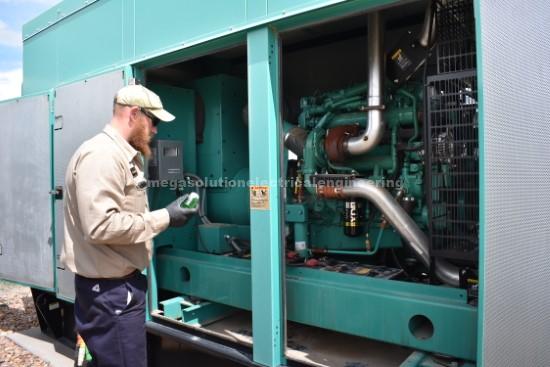
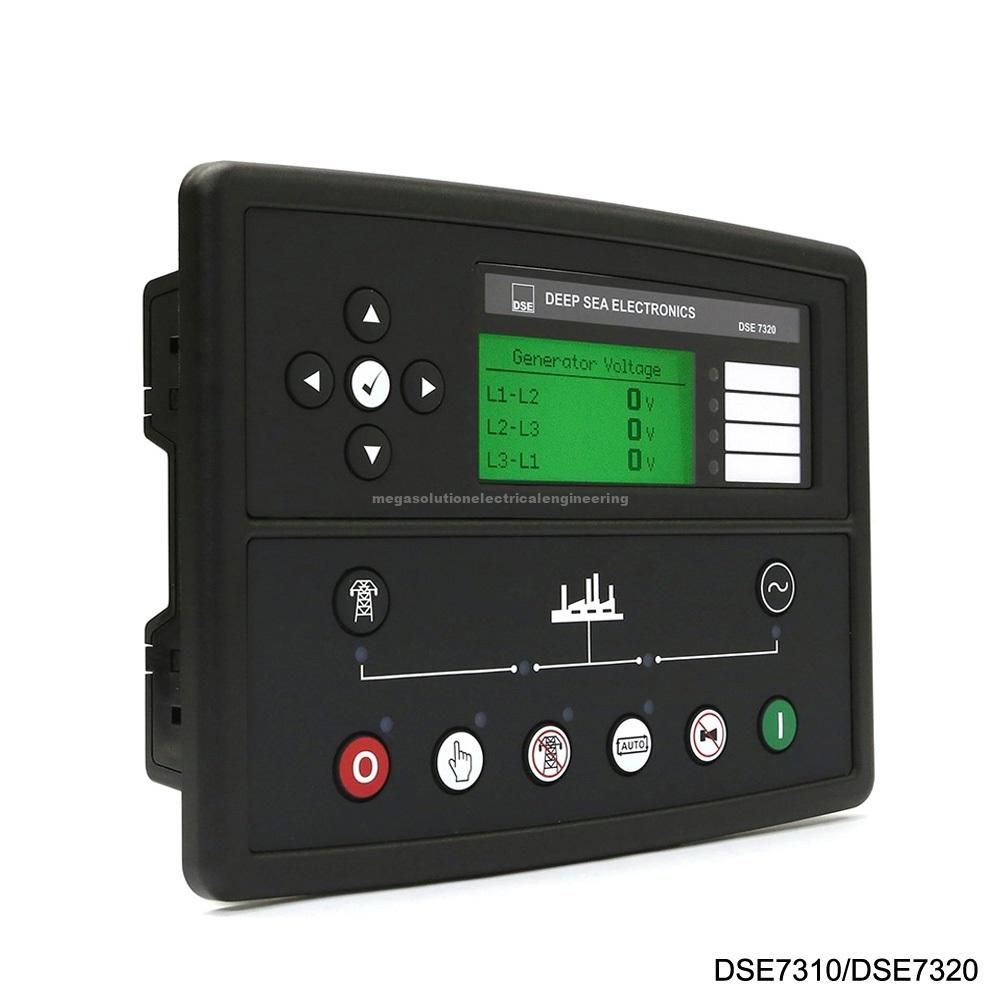
Our generator expert in Ghana technicians for your generator repairs and maintenance know what a hassle any generator problems can be, which is why we’ll always respond to any requests for service as quickly as possible. And because all of our technicians are licensed, background checked, and professionally trained, you’re guaranteed to receive the best quality service and workmanship available when you call Mega Solution Electrical Engineering the generator experts in Ghana. We can assist with all your electrical needs including:
When searching for a reliable electrician, call us at +233 24 415 1232 We specialize in electrical repairs, indoor and outdoor lighting installations, panel upgrades, and even hot tub wiring!
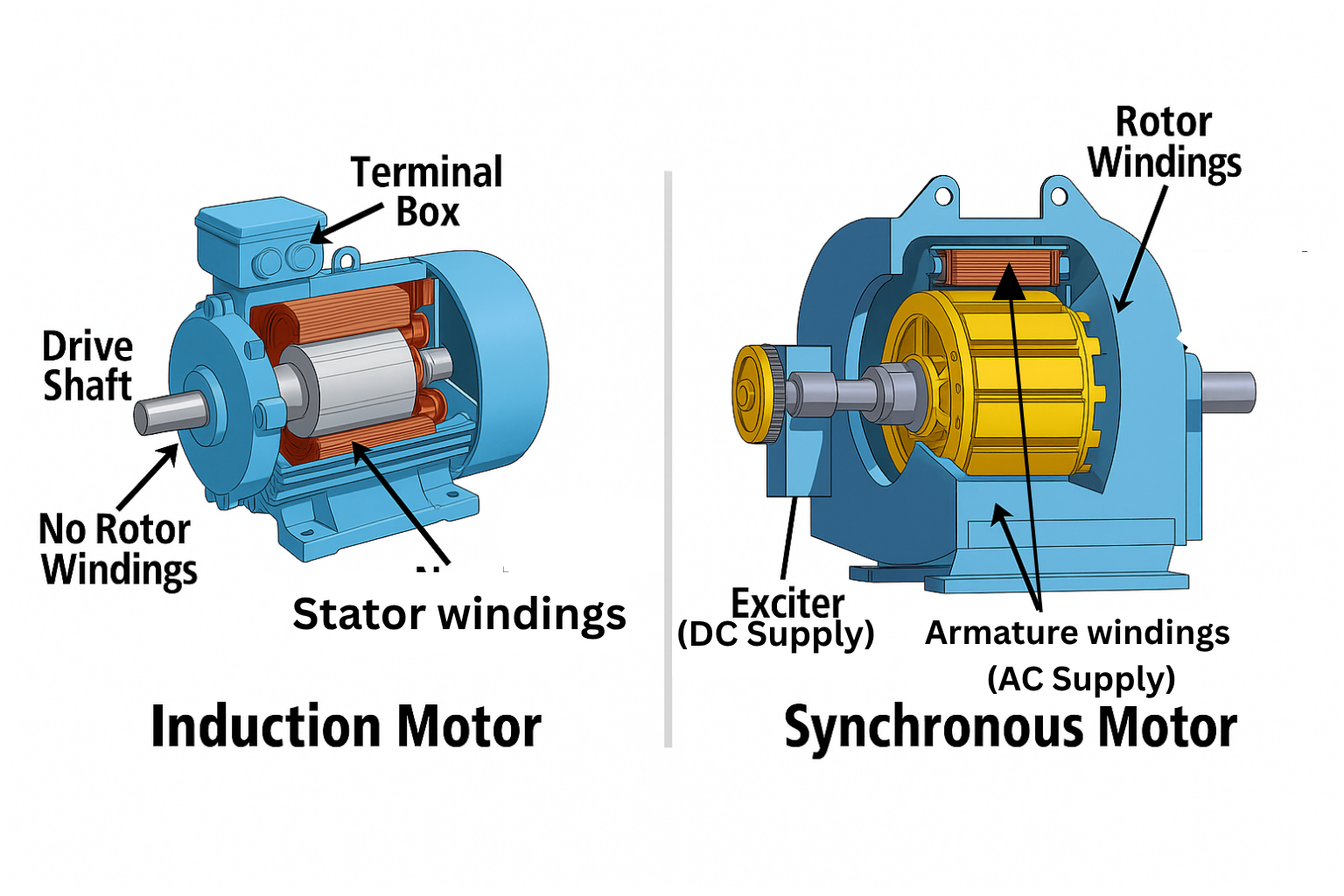
Discover the key differences between synchronous and induction motors.

What safety measures you need to put in place in your industry and why

As energy bills continue to soar, households and businesses alike are
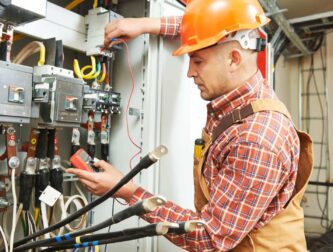
Dreaming of a Career as an Electrician in Ghana? Here's How to Make It

Characteristics of Top Electricians Before starting your search, it's
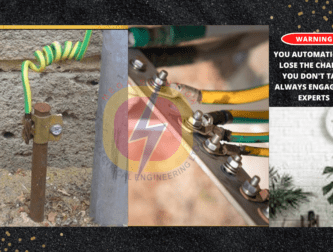
Unlock the Secrets of Earthing Systems in Electrical Wiring! Discover

